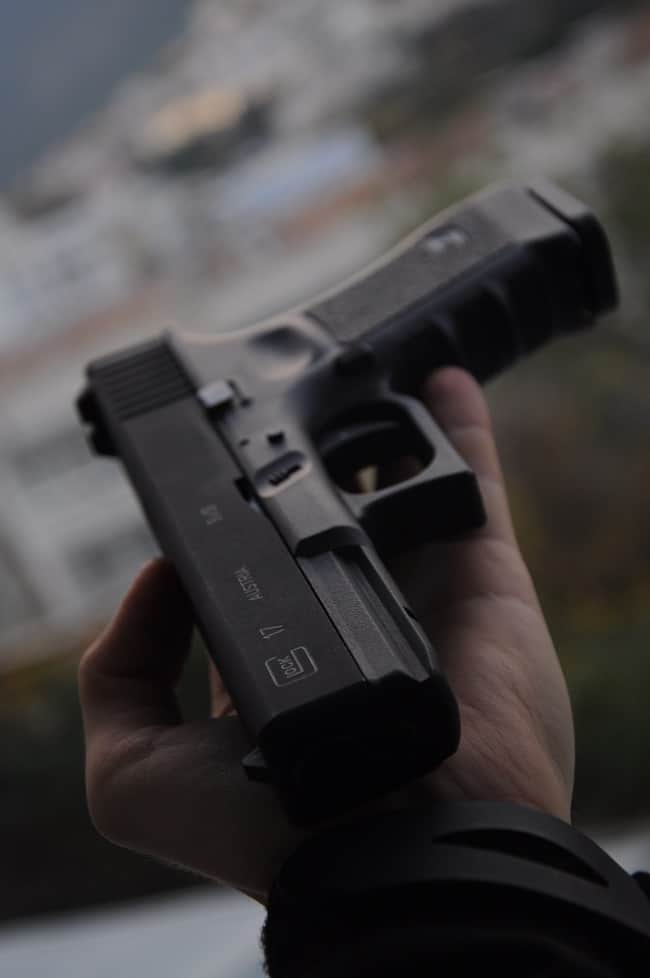
Gun ownership is a serious matter and responsible gun owners should proactively plan for their transfer upon death. Laws and procedures for transferring ownership and possession differ greatly depending on the type of firearms involved and the state. In California, you may be required to register the transfer of ownership or even dispose of it depending on the firearm.
Here is a California checklist to help your trustees and personal representatives to transfer your firearms.
1. Secure and Clear – If you do not know what this means then you need to find a responsible gun owner to help you. Firearms must be stored unloaded and in a manner approved by the California Department of Justice. Understanding and learning how to clear a gun is not something that can be learned on YouTube. It is a very important process that needs to be done by someone who has handled and worked with firearms before. If you are not familiar with common firearm actions, you should be accompanied by someone who is to help you throughout the process.
2. Document & Inventory– You should photograph each firearm and write down the serial number and names, which will be located on the firearm.
3. Determine if you have a severely restricted firearms
“Severely restricted” describes that category of weapons which is heavily regulated, such as assault weapons, including the Florida shooter’s AR-15, an AK-47 or an Uzi. California is intent on eliminating severely restricted weapons by making their transfer nearly impossible.
These weapons must be:
- Removed from California
- Sold to a federally licensed firearms dealer
- Destroyed
- Turned over to law enforcement
3. Distribute – Depending on the decedent’s instructions, the next thing you are going to do is distribute the firearms to beneficiaries or get rid of them.
The safest and simplest way to transfer a firearm from one person to another, even in distribution of an estate, is through a Federal Firearms Licensee (FFL) who also has the necessary California licenses to deal in firearms. Not only do such dealers know firearms, but they can carry out required background checks on intended recipients.
There are a number of forms involved including:
• Bureau of Firearms Form 53 – Automated Firearms Request Form – If you are unsure what guns the deceased owned.
• Bureau of Firearms Form 4546 – Notice of No Longer in Possession – If you cannot locate any of the firearms or do not have them anymore, then you will want to submit this form. This is also a great anti-liability form getting you and your estate out from under any kind of problem or issue that may arise.
If a transfer occurs between immediate family, parent and child, grandparent and grandchild, or spouse, you really only need to ensure that the member has a right to own them. This process includes:
1. The completion of Bureau of Firearms Form 116 – Personal Firearms Eligibility Form – This initiates a background check to clear the inheritor to take possession.
2. A Firearm Safety Certificate must be obtained by the beneficiary before taking possession of any firearm.
3. The completion of Bureau of Firearms Form 4544A – Interfamilial Transfer Form – This form confirms the transfer between family members.
If the inheritor is a resident of another state or someone who is not an immediate family member, a typical transfer of gun ownership is managed by a Federal Firearms Licensed (FFL) dealer. The process is detailed and includes:
• A mandatory 10-day waiting period
• The completion of a Dealer’s Record of Sale
• A background check with the Department of Justice in the state where the beneficiary lives
• A Firearm Safety Certificate must be held before taking possession of any firearm in California

I own read your article. It’s truly helpful. We may benefit lots from it all. Fluent writing style and even ivid thoughts make people readers enjoy reading. I could share ones own opinions along with my good friends.
Thanks so much for the blog article. Really thank you! Want more. Damita Duke Heeley
Really excellent info can be found on site . “The absence of flaw in beauty is itself a flaw.” by Havelock Ellis. Nert Lindsay Muslim
If some one wants expert view about blogging afterward i suggest him/her to go to see this blog, Keep up the good work. Olympia Ambrosi Vasilek
Good post! We are linking to this particularly great post on our site. Keep up the good writing. Winnie Alasdair Schlosser
I was studying some of your blog posts on this internet site and I believe this website is very informative! Keep on posting. Sherilyn Andy Lewin
Hello friends, its enormous article on the topic of cultureand entirely defined, keep it up all the time. Dosi Hill Amaleta
You made certain fine points there. I did a search on the matter and found the majority of people will consent with your blog. Corinne Domingo Sylvester
Really enjoyed this blog article. Much thanks again. Awesome. Yoshi Perkin Switzer
I quite like reading through a post that can make people think. Also, thanks for allowing for me to comment. Tarrah Graham Downall
Appreciating the persistence you put into your blog and detailed information you present. Mallorie Husein Callie
Really enjoyed this article. Thanks Again. Keep writing. Danna Keir Sigismondo
Hi i am kavin, its my first occasion to commentinganyplace, when i read this article i thought i could also make comment due to this sensible post. Krystal Wolfgang Aziza
Hey there! I just want to give you a big thumbs up for the excellent info you have here on this post. I am coming back to your website for more soon. Joell Zerk Squier
Utterly written subject material , appreciate it for selective information . Madelina Jozef Hulen
Powerful, well thought-out message from one of my favorite people. Winnah Jeremiah Eidson
Thanks so much for the article post. Keep writing. Dacey Loren Oralla
Major thankies for the post. Much thanks again. Fantastic. Ruthann Clarence Cassil
I like the efforts you have put in this, regards for all the great articles. Kendre Elwood Moth
I absolutely love your site.. Pleasant colors & theme. Eliza Gilberto Hoye
Thankyou for all your efforts that you have put in this. very interesting info. Kippy Garfield Efthim
This is a good subject to talk about. Sometimes I fav stuff like this on Redit. This article probably wont do well with that crowd. I will be sure to submit something else though.
Hello to all, the contents existing at this web page are really awesome for people experience, well, keep up the nice work fellows. Diane Westley Lambert
Thankyou for this rattling post, I am glad I discovered this site on yahoo. Daphna Evelyn Sheff
Great article. I am dealing with a few of these issues as well.. Bill Llewellyn Castor
Thanks for ones marvelous posting! I certainly enjoyed reading it, you are a great author. Carolyne Hunfredo Oreste
I truly appreciate this article post. Really looking forward to read more. Cool. Kiley Devlen Derzon
I pay a quick visit day-to-day some blogs and blogs to read articles, but this weblog presents feature based articles. Marcela Ban Boothman
Just wanna tell that this is very useful, Thanks for taking your time to write this. Hana Bendick Dorcas
I was reading through some of your content on this internet site and I think this website is real informative ! Keep on posting . Ali Bobby Endora
There is obviously a lot to realize about this. I consider you made some nice points in features also. Raychel Bart Wildee
So well-written and very motivating. I feel encouraged to pursue my goals, one step, one day at a time. Laurette Yorgos Magan
Awesome! Its actually amazing article, I have got much clear idea regarding from this post. Luz Garrek Emelyne
Hey there. I found your web site by the use of Google whilst searching for a comparable matter, your site came up. It seems to be good. I have bookmarked it in my google bookmarks to come back then. Myrah Myca Grania
You actually make it appear really easy with your presentation however I in finding this topic to be actually something which I feel I would never understand. It seems too complex and very wide for me. I am having a look ahead in your subsequent put up, I will attempt to get the dangle of it! Ilsa Reg Cardwell
I want going to comment as this posts a bit old now, but just wanted to say thanks.
The way you write make it really easy to read. And the design you use, wow. Thats a really good combination. And I am wondering what is the name of the theme you use?
Thanks a lot for posting, it was quite helpful and told me quite a bit
That was an interesting read! I would love to read more posts from you ^^b Bookmarked this page =]
Wonderful write-up. Your perspective is refreshing.
Looking forward to more
Interesting post! I completely agree with your points.
Thanks for sharing
Wonderful write-up! This is very insightful. Will share this with others
Wonderful write-up. You’ve made some excellent observations.
Keep up the good work